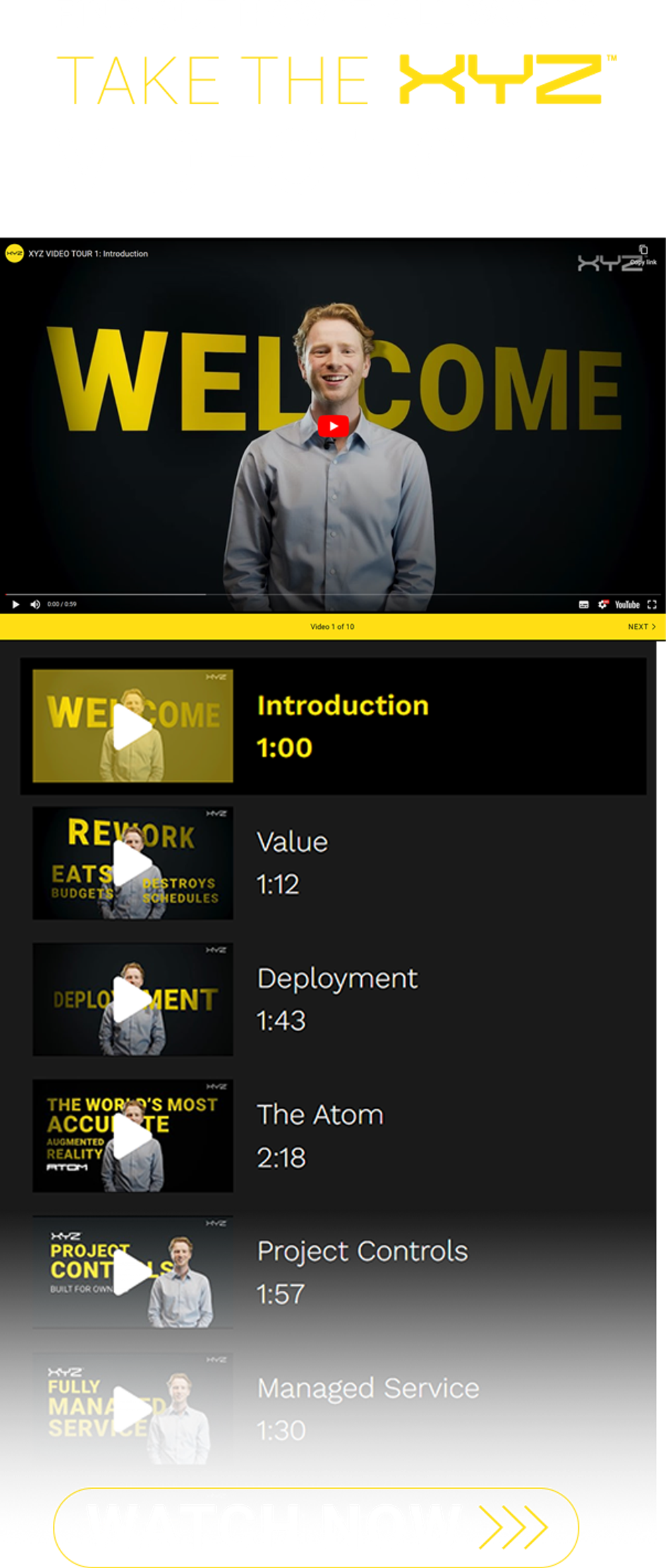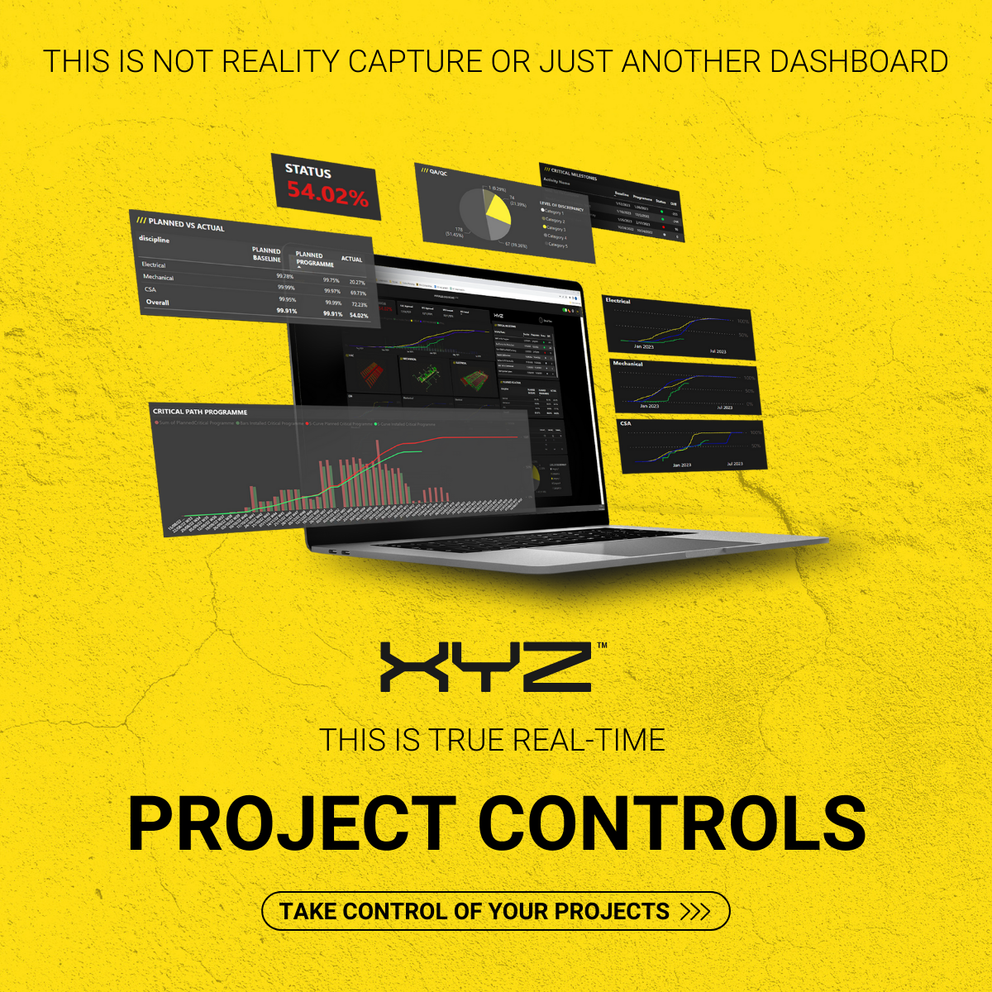-
Services
Services
Find out how we work with our clients and deliver value to construction projects from day one
-
Solutions
Solutions
Discover how all our solutions sync together to deliver construction's most powerful BIM platform to date
-
Built for
Built for
-
Industry
Industry
Understand how we support construction's biggest sectors, and hear from our clients who have experienced the power of XYZ
-
Resources
Resources
Get stuck into all our latest thought leadership, news, reports and industry leading content
-
Company
Company
Dive into what makes XYZ tick, unearth why construction is in our DNA and why we are world leaders in AR solutions

Insights
5 effective ways to eliminate rework

22 November 2022
It’s a well-established fact that the construction industry faces a huge error and rework problem. Today we offer you some practical solutions to eradicate rework, saving construction teams valuable time and money.
In an industry notorious for its very slim profit margins, rework is a persistent and bothersome issue in construction, accounting for up to 30% of construction activity according to some experts.
A recent report revealed that the industry wastes $625 billion per year globally in rework [Harnessing the Data Advantage in Construction, Autodesk].
But money isn’t the only thing at stake: incorrectly followed plans lead to fundamental and dangerous building defects, material waste (and thus unnecessary carbon emissions), as well as handover delays, all of which can inflict reputational damage and destroy workforce morale.
In the pursuit of working smarter and more efficiently, here are five effective ways to eliminate rework on your construction projects:
Adopt a quality management system (QMS) - When you implement the correct QMS, you unlock the ability to identify, rectify and learn from mistakes. A well-integrated QMS gives you a solid framework that automates processes, increasing your efficiency and accuracy. Additionally, by its very implementation, it might even inspire a quality-focused culture within your broader organization.
The ideal QMS software allows for seamless integration with your existing technologies. XYZ Reality and Autodesk’s partnership blends an augmented reality representation of your 3D model with Autodesk’s Construction Cloud® solutions. This enables you to see and manage site issues to millimeter accuracy, allowing you to assign discrepancies in real-time to the responsible party for instant correction.
Training investment - It’s proven that contractors who offer training programs to employees reduce rework costs by 11 - 22% [Islamic University of Gaza/Berlin School of Technology report]. Not only does it provide your teams with the opportunity to learn vital technical skills, but also teaches them to effectively communicate and manage change. By giving them a chance to contribute ideas, teams gain an increased sense of engagement, improving their performance and boosting workplace satisfaction.
To understand where to best concentrate training efforts, companies should evaluate their processes to uncover where the bulk of errors occur.
BIM collaboration - The utilization of a cloud-based 3D BIM model from the earliest design stages facilitates seamless collaboration across trades. It allows real-time design updates, superior project management and site validation in 3D with XYZ Reality’s Engineering Grade Augmented Reality headset, the Atom™.
An engineer who wears the Atom headset during site inspection is able to live-stream the walkthrough to any number of stakeholders, no matter their global location. Whether they’re designers, contractors, subcontractors or clients, you’ll ensure everyone is on the same page.
Team alignment - The issue of information silos is a significant contributor to error and rework. This is especially true in the design phase. When you join up disparate teams and align the goals of stakeholders, you tighten focus and guarantee a unified manner of working.
As a sense of teamwork trickles down from the top, make sure it’s a core principle established by leadership that permeates all aspects of your organization.
Adoption of Engineering Grade augmented reality - Technology companies have long been trying to introduce holographic building representations to contractors in the field. But limitations and a failure to reach the levels of accuracy required onsite in previous augmented reality (AR) tech hindered broad implementation. That is, until now.
The Atom, XYZ Reality’s Engineering Grade AR™ headset, brings the 3D model onsite, ensuring that construction is carried out to millimeter accuracy the first time, every time.
“Groundbreaking” says Diarmuid O’Sullivan, Construction Director at PM Group.
The Atom allows your teams to literally see where installations belong, enabling real-time validation, so that you can catch otherwise undiscoverable errors and thus prevent costly rework and handover delays.
As the problem of rework persists, it’s crucial for construction companies to adopt a solution that aligns the vision of contractors, designers, clients and stakeholders. By concentrating on achieving absolute cooperation and coordination between all involved parties, you secure the best results.
The Atom headset arms contractors with a tool that unifies teams, enabling them to catch errors before they turn into project-threatening faults and rack up catastrophic rework costs.
For more information about the causes of construction’s most expensive problem and its solutions, download our whitepaper ‘Rethinking rework’ here.







